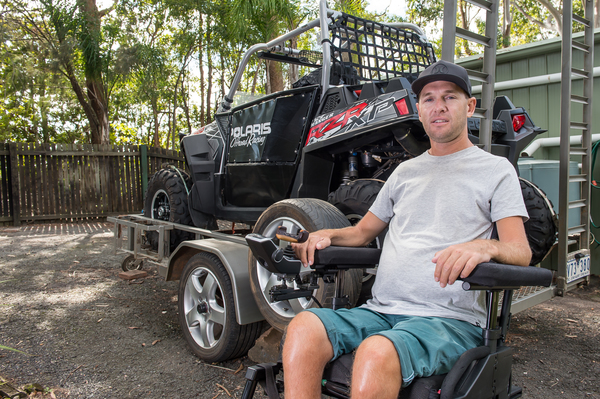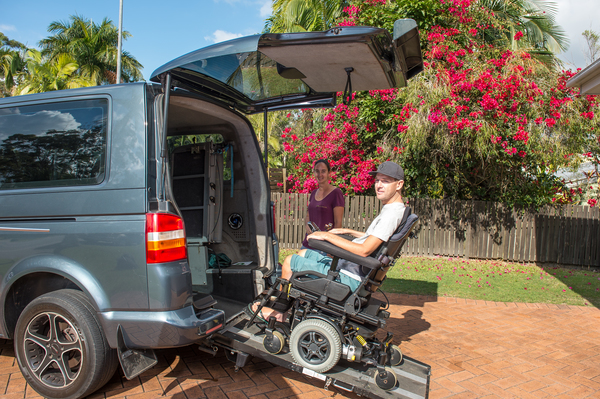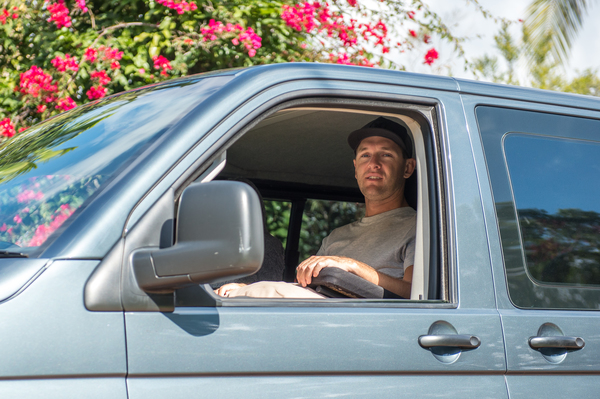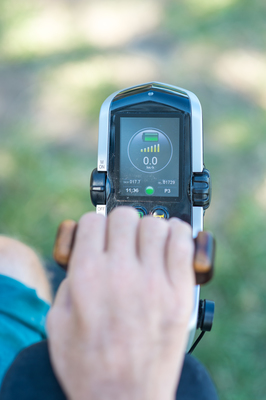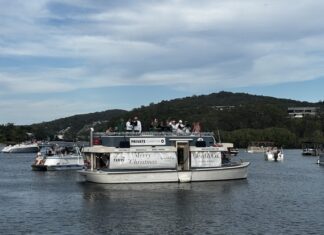By Margaret Maccoll
Ten years after breaking his neck in a dirtbike accident Casey Cherry, 30, is feeling freedom and tearing up the track again with a few adjustments to the average buggy.
A team of six carers and some modified vehicles mean Casey, a quadriplegic, who moved from Pakenham, Victoria, for warmer weather, can live as independently as possible.
And while he and his family are constantly on the lookout for new treatments or drugs that could improve his movement, he now counts himself lucky to be alive.
“I’m not expecting to ever walk again but if I could get my hands working that would make a massive difference,” he said.
Casey was 20 years old and helping out on his friend Mick Anderson’s sheep property, Cymbic Vale in Broken Hill when the bike he was riding hit wet ground and stopped, sending him over the handlebars.
“I had a lot worse crashes than that. I didn’t have a scratch on my body. I knocked myself out for a couple of minutes. When I came to I thought something’s not right. I couldn’t feel anything.”
Mick rode on to get help. The pair had been on the way to meet Casey’s father Ian, who was fixing fences.
Casey lay in a dry creekbed for hours while the Royal Flying Doctor Service made its way to the remote property in a mammoth effort to get him to Adelaide Hospital for surgery.
“A heap of farmers came to help,” he said. The fire brigade travelled 50-60km to get to him. They had to cut down fences to get through.
“The Royal Flying Doctor had to land at a neighbouring property which had a long enough landing strip and travel cross-country by 4WD.
The accident happened about 10am. It was over 12 hours before Casey got to surgery.
“I was a bit oblivious to it,” he said. “I knew I’d broken my neck. I didn’t think it’d be a permanent injury, I thought I’d be back up the next day.
“When I got to hospital the doctor said you’ll never walk again.
“I used to play football, basketball, cricket, go snowboarding and surfing. From that, going to do nothing was a bit crap.”
Casey had broken his C3, 4, 5 and 6 vertebrae. He had surgery to fix his broken vertebrae with plates, screws and fusing but his spinal cord couldn’t be repaired.
He has no movement from his chest down, nor in his fingers, but some in his arms.
Casey spent 11 months in rehabilitation, then went home to live with his parents.
“It was tough in the beginning. I was crying every day,” he said.
“In rehab they teach you about your body and how it functions, how to teach carers what to do.
“I just realised that’s how it is.
“I still have my moments. Small things might set me off but then I think of my friends and family. I’m lucky to be alive. There are people a lot worse off than me. I can talk normally. I don’t have a brain injury.”
The Pakenham Gazette, a sister newspaper to Noosa Today, followed Casey’s story and worked with him to organise a fund-raiser for the Flying Doctor Service, raising more than $11,000.
After six years struggling through Melbourne winters Casey decided to move to Noosa. His injury means he can no longer regulate his body temperature, so during the colder months he mostly stayed inside near a heater.
Casey had been to Noosa for family holidays before and since his accident, and it was where his uncle was living.
“I wanted a fresh start,” he said. “I was going to move eventually. I’m 30 years old. There are opportunities to get out more here. Everything is more accessible for a wheelchair.”
Accident insurance payments enabled Casey to buy a house and fund his ongoing expenses, including carers.
He said moving away from family and friends was difficult at first, but he soon found they visited him regularly to holiday and he gets to spend even more time with them now.
“My mates treat me normally. That’s what I want,” he said.
Since moving to Noosa Casey has worked with a company called Automobility to customise his van and to create an off-road buggy he can operate himself.
Casey bought a normal van which was modified by Automobility. They lowered the floor to provide head clearance and installed a ramp at the rear which enables him to wheel his chair into the van and lock in a docking station while a carer drives.
“I try and get out of the house. I go for a wheel up to the National Park and I like fishing in the river occasionally,” he said.
A 4WD electric wheelchair has given him more access, particularly to the beach.
“It’s got big chunky wheels and goes anywhere. I get some strange looks and people ask me about it.”
But Casey’s greatest freedom comes from an off-road buggy. The steering wheel and foot pedals have been replaced with two controls he can operate himself.
“I was right into motorbikes,” he said.
“With the buggy I can go back to my friend’s farm at Broken Hill and some of the family meet me up there,” he said. “It’s just like the old days.”
“Since moving to Noosa it’s the happiest I’ve been.”

